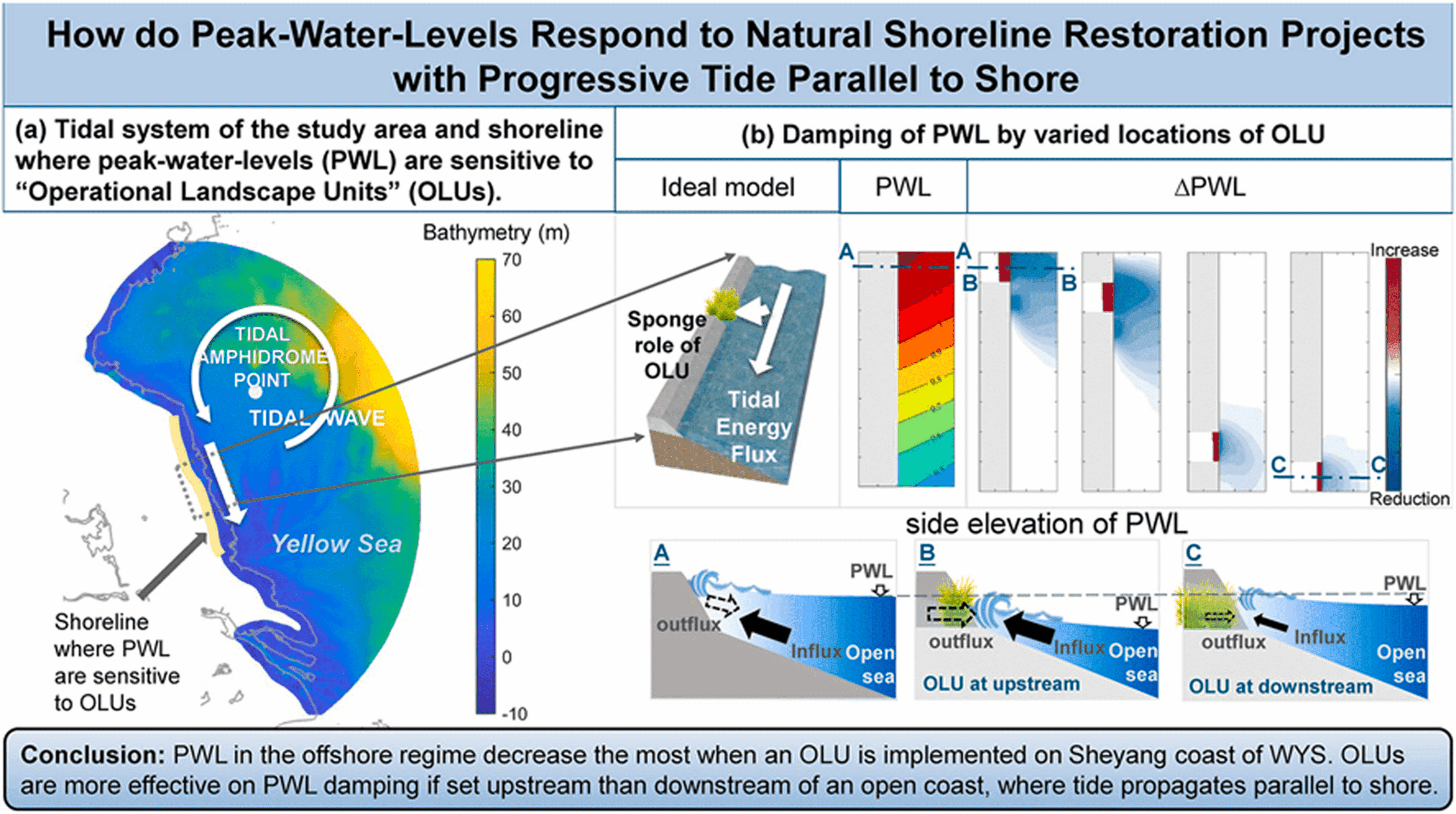Hazard mechanisms and mitigation methods for offshore extreme sea states
About 713 wordsAbout 2 min
2025-03-13
Introduction
To explore the response of the offshore tidal wave system to climate change and shoreline alteration, to reveal the synergistic disaster mitigation mechanism of coastal natural elements and artificial structures, and to propose ways to optimize the layout and advancement of future executable coastal restoration units.
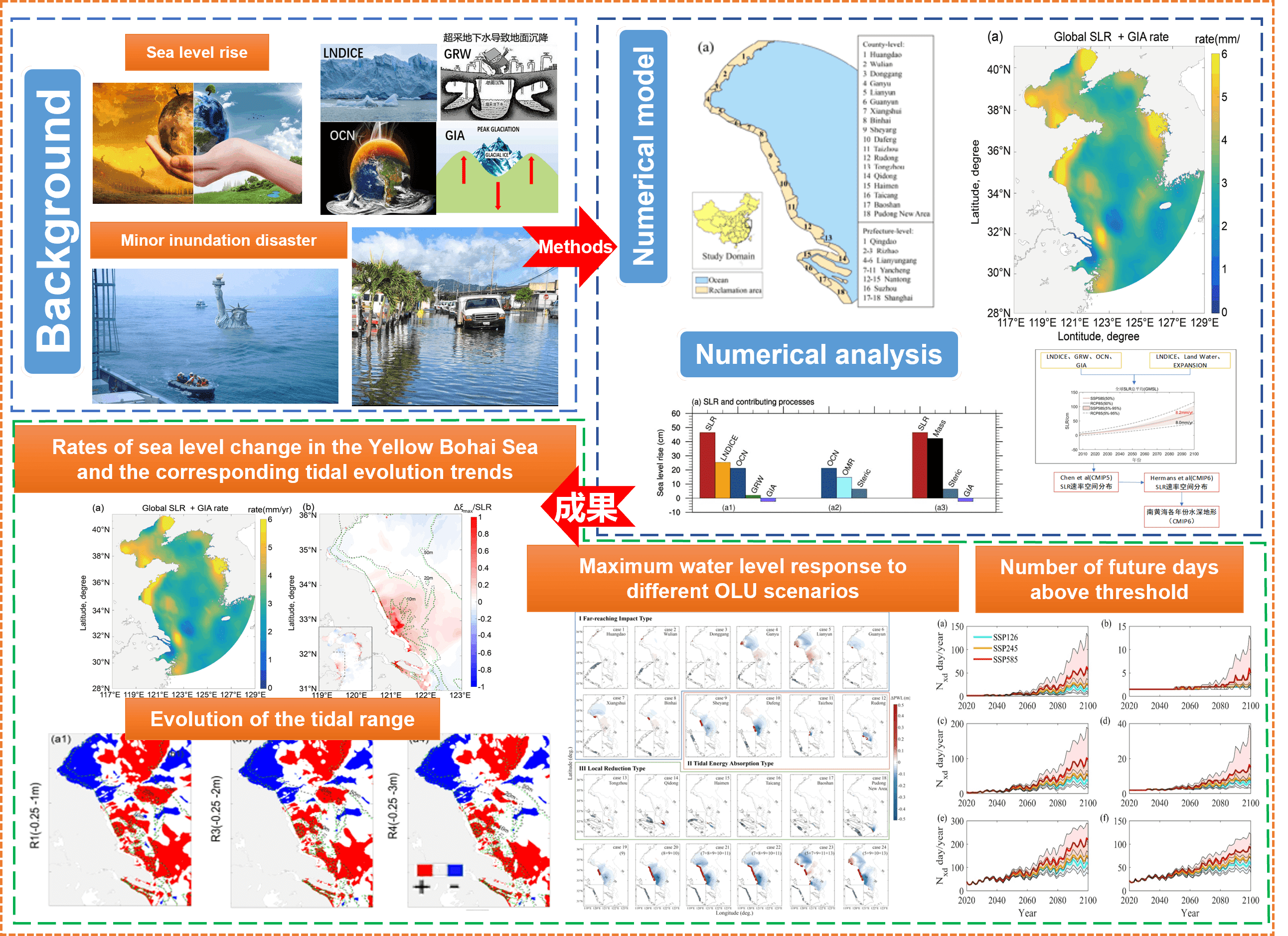
The roles of anthropogenic activities and sea level rise in the tidal distortion of the open coast of the Yellow Sea shelf
The intrinsic mechanism of the tidal time-dependent asymmetry (TDA) is revealed by exploring the effects of different shorelines and mean sea level rise on the tidal distortion of the open coast of the Yellow Sea shelf The nonlinear tidal interactions between M2/M4, M2/S2/MS4, and K1/O1/M2 are the three The interactions between M2/M4 and M2/S2/MS4 are the most sensitive to different shoreline morphologies and produce the largest tidal deformation evolution. For a coast with a progressive tidal regime, the genesis of tidal deformation and shallow-water tides depends mainly on the influx of nearshore semidiurnal tides, which in turn is controlled by the position of the M2 tide. For a coast with quasi-stable tidal behavior, the size and location of tidal flats and shoals play a crucial role in the genesis of tidal deformation and shallow water tides. The results suggest that hardening the shoreline or SLR can suppress advection and seafloor dissipation, thereby reducing tidal distortion.
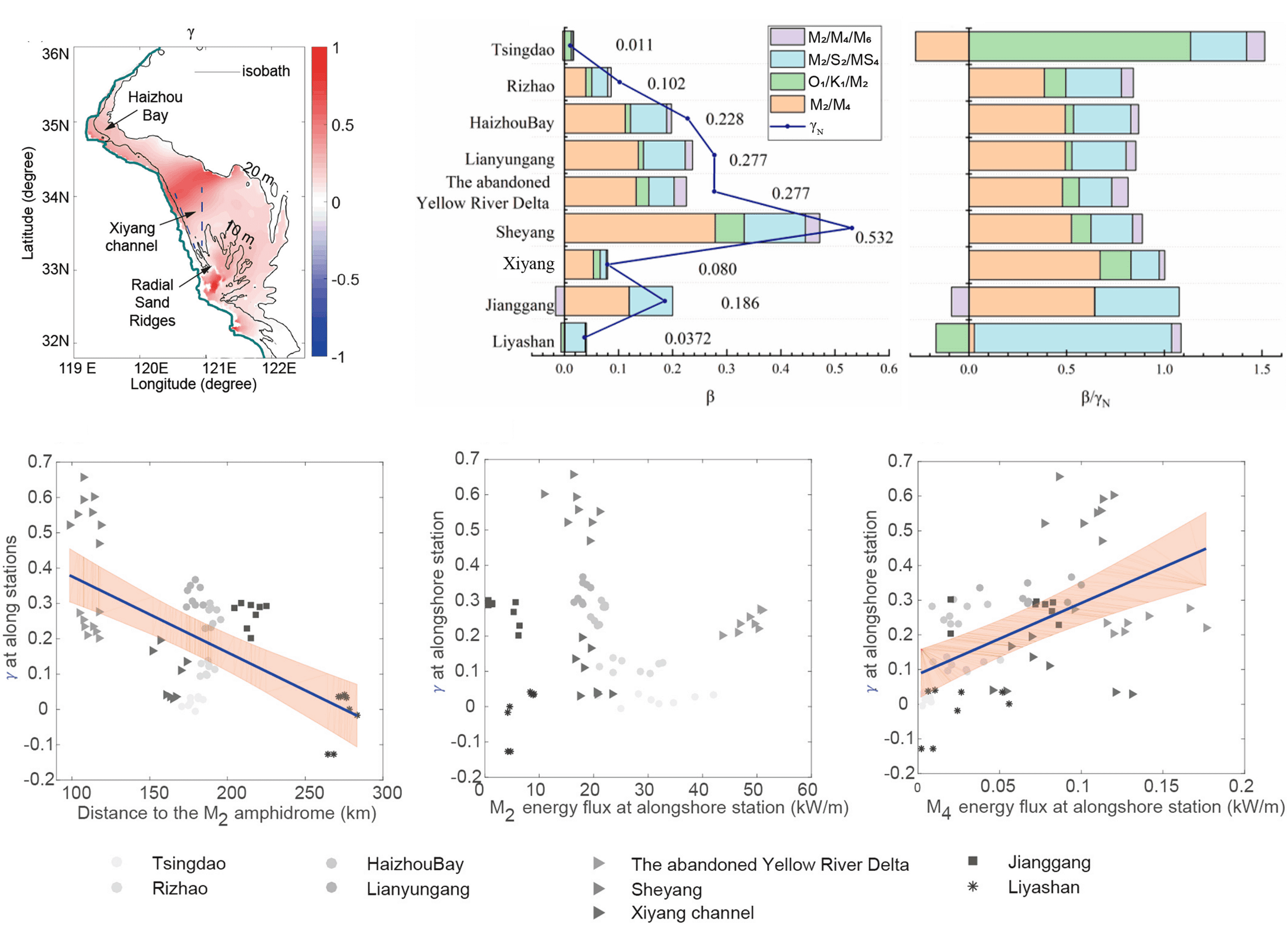
The influence of tides on sea level change
A numerical model is used to explore the tidal changes along the Jiangsu coast and in the waters near the Yellow Sea shelf, and to determine the realistic trend of SLR in the waters near the Yellow Sea shelf. The main phenomena of tidal change are: the tidal difference in the northern shelf decreases significantly, and the tides in the southern shelf increase mainly; while the sea level rise is unidirectional. We also explore the response of nonlinearity and spatial similarity of tidal differentials to SLR, considering a multilayered homogeneous SLR scenario and allowing for inundation of the natural coastline. At the regional scale, sea-level rise induces a shift in the offshore tidal system and controls the net energy flux into the coastal bays; at the local scale, tidal dynamics are mainly influenced by net energy fluxes and tidal dissipation, but may also be influenced by tidal reflections, which depend on whether the basin is tidally reflective or not.
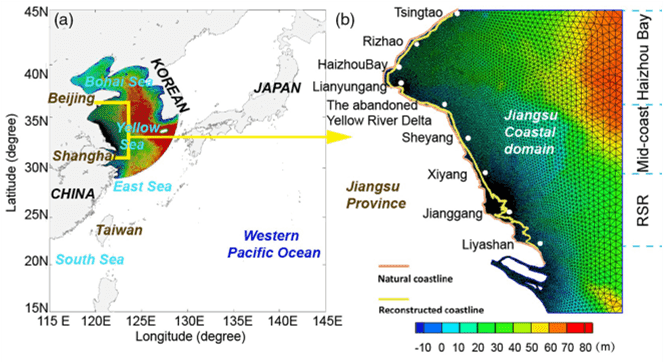
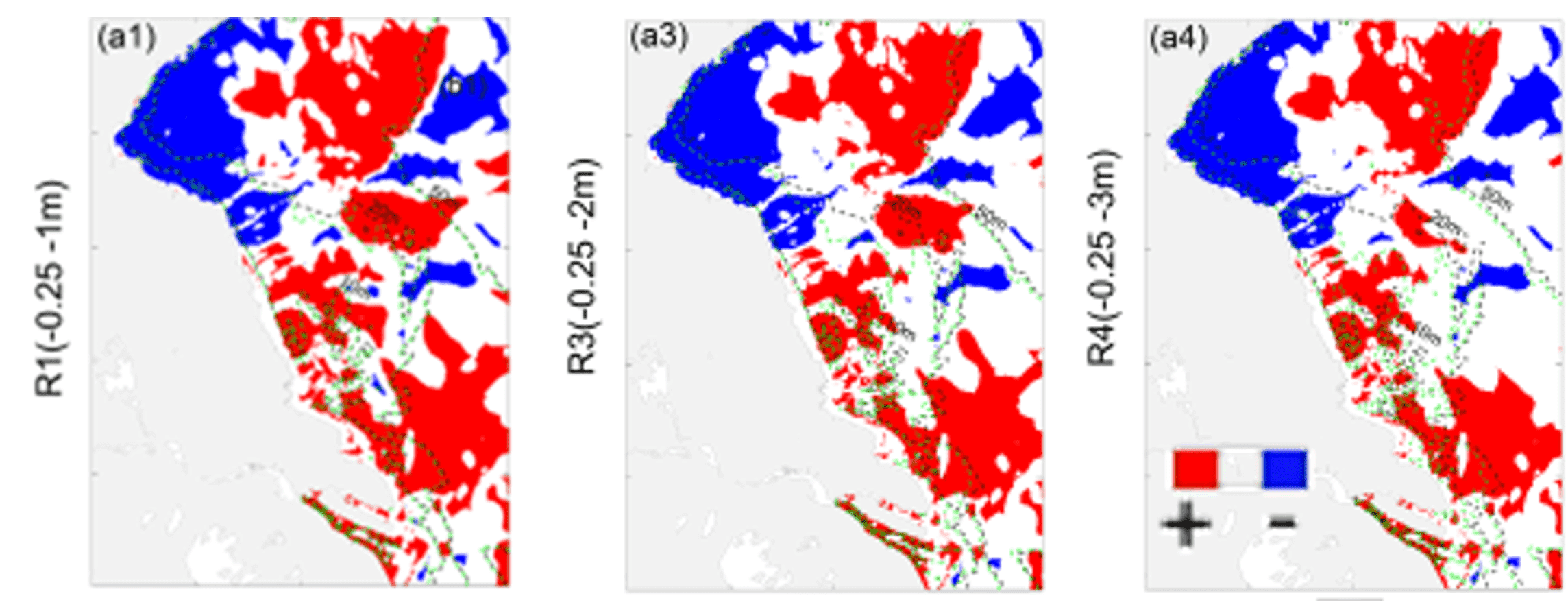
Relationship between tidal asymmetry and geomorphic features of radial sand ridges
Based on the real underwater topography of RSRs, the typical geomorphic features of the radial sand ridge cluster are abstracted, and the asymmetric features of tide levels and tidal currents within the RSRs system are revealed through the process-oriented numerical simulation experiments. The paper focuses on comparing the spatial distribution patterns of the basic indicators such as tidal time asymmetry (TDA), peak current asymmetry (PCA) and tidal rest asymmetry (SWA), and discusses the main controlling factors of the near-shore tidal evolution and sediment transport dynamics in terms of the three main geomorphologic factors, namely, seabed bottom slope, relative depth of the submerged sand ridges to the tidal channel, and the convergence of the tidal channel.
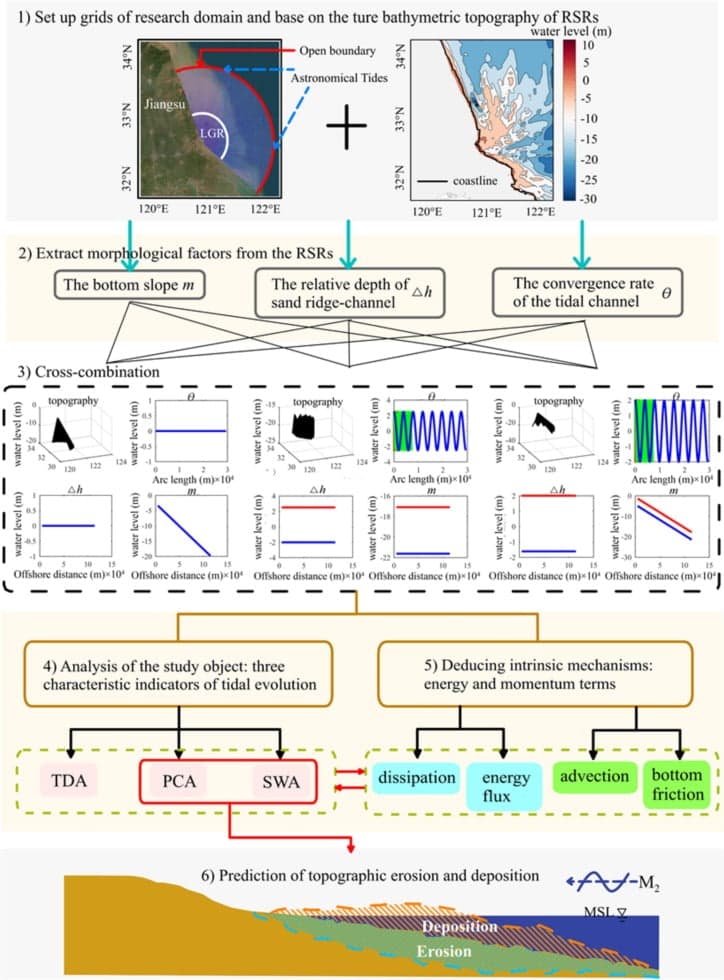
The application of executable shoreline restoration units in shoreline restoration and the investigation of the effects of
To study the effects of the scale and spatial arrangement of natural shoreline restoration projects on the peak water level (PWL), the concept of executable ecological restoration units, "Operational Landscape Units" (OLUs), was introduced and applied to the east coast of China, especially to the western part of the Yellow Sea inland shelf (WYS), where the nearshore is divided into 18 county- and district-level areas. The effects of OLUs on the peak water level of the WYS were quantified through 24 sets of numerical simulation experiments. The effects of OLUs at different locations and scales were simulated by establishing different shoreline restoration scenarios and compared to a fully hardened shoreline. The study shows that rationally placed OLUs can effectively reduce coastal flood risk and provide new ideas for coastal protection and restoration programs.
